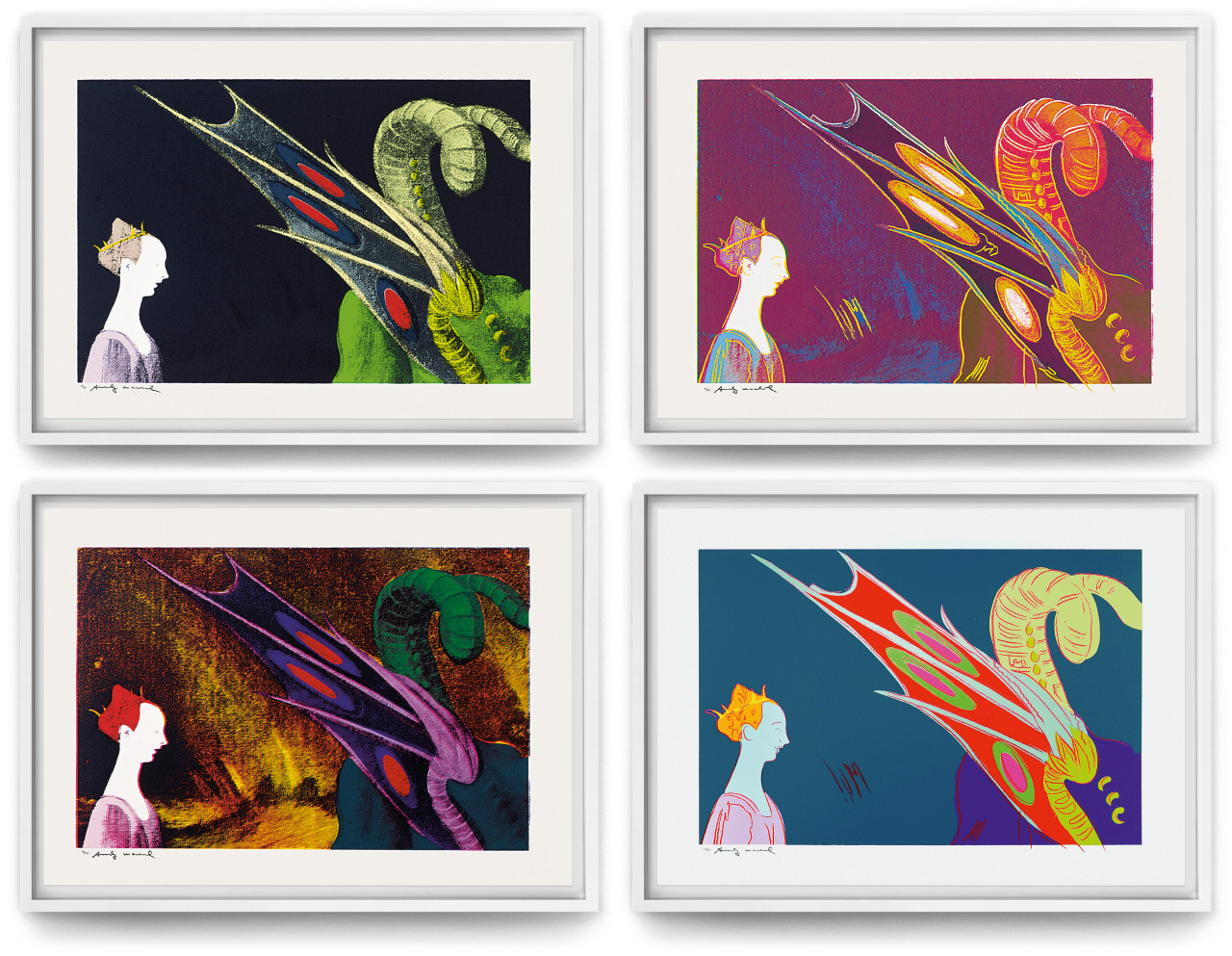in online exhibitions Painterly and 55 Years of Schellmann Art









Paolo Uccello, St. George and the Dragon, 1460, 1984
Part of "Details of Renaissance Paintings" suite of four portfolios containing four screenprints each.
Screenprint on Arches Watercolor (Cold Press) rag paper, 81 x 112 cm. Edition of 50, signed and numbered.
F&S II.324-327
Andy Warhol famously used silkscreen for both his editions and his unique works, often reproducing the same motif over and over again, thereby establishing serial printing and reproduction techniques in the visual arts and questioning the principle of originality. The resulting loss of a personal brushstroke is exemplary of the coolly distanced attitude of Pop artists and represents a striking contrast to the iconic Renaissance works he revisited for his Details of Renaissance Paintings suite.
For this edition, Andy Warhol chose to tightly crop the original composition of Paolo Uccello’s St. George and the Dragon painting (ca. 1470) to only show the princess’s upper body and a small part of the dragon. This deliberate detachment removes the scene from its original religious and historical context, reducing it to only its visual components. This reflects the artist's fascination with repetition and reproduction, echoing that of consumer culture. Much like his Campbell’s Soup cans transform ordinary goods into art, his reinterpretation of Renaissance paintings recasts them as objects of modern consumption, blurring the lines between "high" and "low" art.
The edition Paolo Uccello, St. George and the Dragon, 1460 is part of the collection of MoMA, New York.